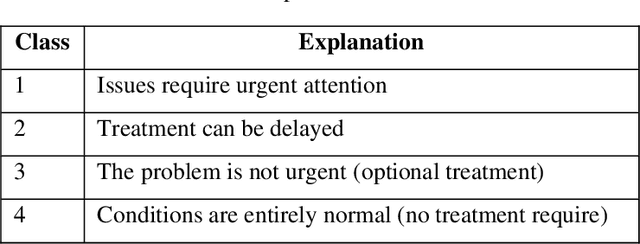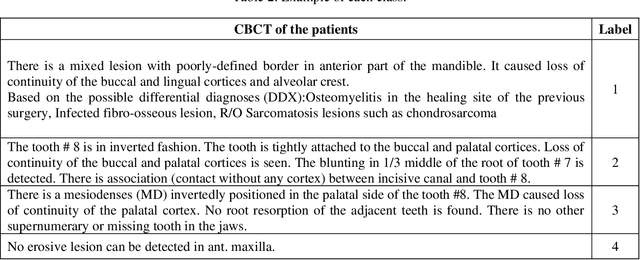Dental Severity Assessment through Few-shot Learning and SBERT Fine-tuning
Paper and Code
Feb 24, 2024



Dental diseases have a significant impact on a considerable portion of the population, leading to various health issues that can detrimentally affect individuals' overall well-being. The integration of automated systems in oral healthcare has become increasingly crucial. Machine learning approaches offer a viable solution to address challenges such as diagnostic difficulties, inefficiencies, and errors in oral disease diagnosis. These methods prove particularly useful when physicians struggle to predict or diagnose diseases at their early stages. In this study, thirteen different machine learning, deep learning, and large language models were employed to determine the severity level of oral health issues based on radiologists' reports. The results revealed that the Few-shot learning with SBERT and Multi-Layer Perceptron model outperformed all other models across various experiments, achieving an impressive accuracy of 94.1% as the best result. Consequently, this model exhibits promise as a reliable tool for evaluating the severity of oral diseases, enabling patients to receive more effective treatment and aiding healthcare professionals in making informed decisions regarding resource allocation and the management of high-risk patients.
 Add to Chrome
Add to Chrome Add to Firefox
Add to Firefox Add to Edge
Add to Edge